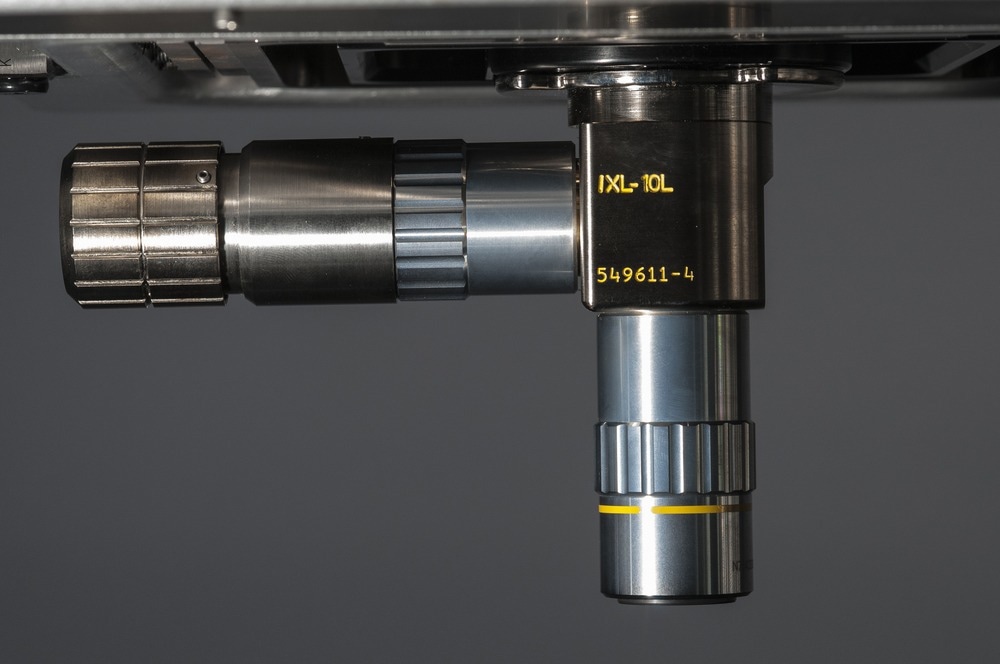In precision engineering and manufacturing, accurate measurements and characterization of the surface of materials are very important for quality control in production processes. Interferometric techniques are powerful tools for surface profiling and metrology, offering high precision and non-contact measurement capabilities. This article explores the principles behind interferometric techniques, their diverse applications, and recent relevant studies that showcase their advancements.

Image Credit: Chris Muteham/Shutterstock.com
Interferometric Techniques
In surface profiling and metrology, interferometric techniques use interference of light waves to determine minute changes in the optical path length. The most common interferometric techniques include Michelson interferometry, white-light interferometry, and holographic interferometry.
Michelson Interferometry
Michelson interferometry is a fundamental interferometric technique that uses a beam splitter to divide a light beam into two paths, which reflect off a reference surface and the sample surface before recombining at the beam splitter. The resulting interference pattern provides the surface topography information via variations analysis in the optical path length.
White-Light Interferometry
White-light interferometry, or coherence scanning interferometry, employs a broadband light source, enabling the simultaneous measurement of multiple points on a surface by utilizing the interference of light with different wavelengths. White-light interferometry is particularly effective for measuring surfaces with steep slopes and discontinuities.
Holographic Interferometry
In holographic interferometry, a hologram is recorded before and after the deformation of a surface. The interference pattern between these holograms reveals information about the surface's shape and changes.
Applications of Interferometric Techniques
Interferometric techniques have applications in several industrial sectors due to their accurate and high-resolution surface profiling. For instance, in the microelectronics industry, where integrated circuit fabrication requires sub-micrometer precision, interferometrics ensures the precise measurement of features such as wafer surface roughness and step heights, contributing to the production of high-performance electronic devices. Similarly, interferometric techniques are extensively used to measure parameters like surface flatness, irregularities, and form errors in lenses, mirrors, and other optical elements.
In medical device manufacturing, especially for components like lenses and implants, interferometric techniques ensure quality finished products. Similarly, the aerospace industry relies on interferometric techniques for characterizing the surfaces of critical components, such as turbine blades and aerospace structures.
Recent Studies
Precision Surface Characterization with Axial Shift Mapping
A recent study introduces axial shift mapping (ASM), a Fizeau interferometry method, to extract the full surface profile of cylindrical optics, particularly X-ray telescope mirrors. X-ray telescope mirrors, designed as off-axis paraboloids and hyperboloids, require precise surface characterization for optimal performance.
The goal of the study was to achieve a surface uncertainty of 5 nm root-mean-square (RMS) or better to meet the stringent requirements for high-resolution X-ray imaging. ASM mitigates uncertainties introduced by null optics and reference surfaces. The method involves lateral shear measurements and addresses quadratic ambiguity induced by rigid body errors during axial shifts. Experimental results demonstrate successful full surface extraction of a cylindrical mirror, providing a crucial advancement for future X-ray telescope designs aiming for sub-arcsecond angular resolution.
High-Definition SLM Interferometry
In a recent study, researchers introduced advancements in interferometric null testing using a high-definition spatial light modulator (SLM) as a reconfigurable alternative to computer-generated holograms. The study outlines a unique alignment process using the SLM to project fiducials on the test part. The researchers validated the alignment by measuring off-axis conics with the SLM-based system, cross-validating within a 30 nm RMS surface figure using conventional interferometry.
The study presents a null test of a 65 mm clear aperture concave freeform optic with a peak-valley sag departure of 91 μm. The measured surface figure of the freeform demonstrated a precision within 40 nm RMS compared to a commercial metrology instrument. The researchers leveraged a reflective SLM with 1152 × 1920 pixels, high phase modulation range, and phase wrapping for increased wavefront range. The novel features facilitated testing the largest aperture and most severe freeform sag departure reported in SLM-based null tests to date.
Challenges
Interferometric techniques face several challenges that researchers are aiming to tackle. For instance, achieving robust performance in environments with vibrations or temperature fluctuations is a significant challenge. Calibration complexities and requirements for skilled operators pose additional challenges. Similarly, integrating interferometry seamlessly into certain manufacturing processes can be difficult. Addressing these challenges is crucial for interferometric techniques to be utilized in diverse applications.
Conclusion
In conclusion, interferometric techniques are great tools in precision engineering, offering accuracy and non-contact capabilities for surface profiling and metrology. From Michelson interferometry to high-definition SLM advancements, these methods have revolutionized diverse industries, ensuring quality control in microelectronics, optical component manufacturing, medical devices, and aerospace. Recent studies, such as axial shift mapping and high-definition SLM interferometry, exemplify the ongoing pursuit of excellence in achieving sub-micrometer precision. However, challenges such as environmental robustness and calibration complexities still provide a research gap for future developments. Overcoming these hurdles is very important to expand the potential of interferometric techniques across diverse industries.
More from AZoOptics: Laser-Based Techniques for Ultra-Precise Gas Measurements
References and Further Reading
Abdelsalam, D. G., & Yao, B. (2017). Interferometry and its applications in surface metrology. Optical interferometry. https://doi.org//10.5772/66275
Chaudhuri, R., Wansha, A., Porras-Aguilar, R., & Rolland, J. P. (2022). Implementation of a null test for freeform optics using a high-definition spatial light modulator. Optics Express. https://doi.org/10.1364/OE.473853
de Groot, P. (2011). Coherence scanning interferometry. In Optical measurement of surface topography (pp. 187-208). Berlin, Heidelberg: Springer Berlin Heidelberg. https://doi.org/10.1007/978-3-642-12012-1_9
Demjanov, V. V. (2010). What and how does a Michelson interferometer measure. arXiv preprint. https://ether-noo.narod.ru/measure.pdf
Ostrovsky, Y. I., Butusov, M. M., & Ostrovskaya, G. V. (2013). Interferometry by holography (Vol. 20). Springer. https://doi.org//10.1007/978-3-540-39008-4
Wisniewski, H., Heilmann, R., Schattenburg, M., & Chalifoux, B. (2023, October). Absolute surface metrology of x-ray telescope mirrors through axial shift mapping. In Proc. of SPIE. https://doi.org//10.1117/12.2677596
Disclaimer: The views expressed here are those of the author expressed in their private capacity and do not necessarily represent the views of AZoM.com Limited T/A AZoNetwork the owner and operator of this website. This disclaimer forms part of the Terms and conditions of use of this website.